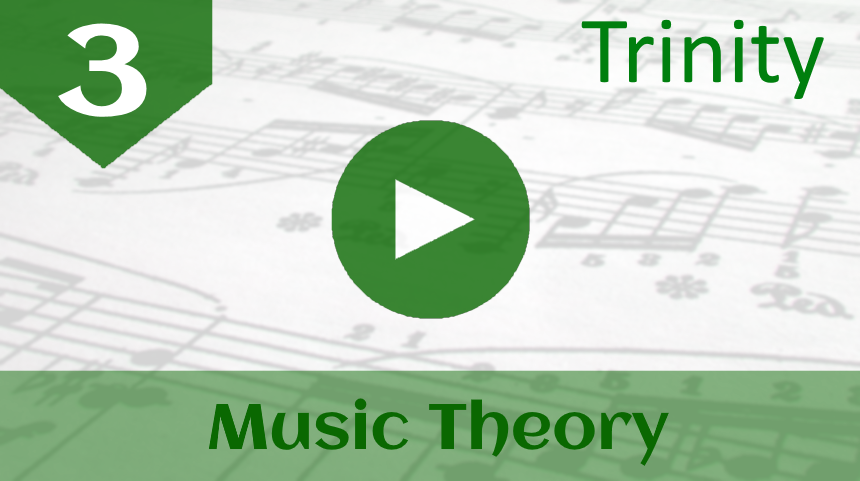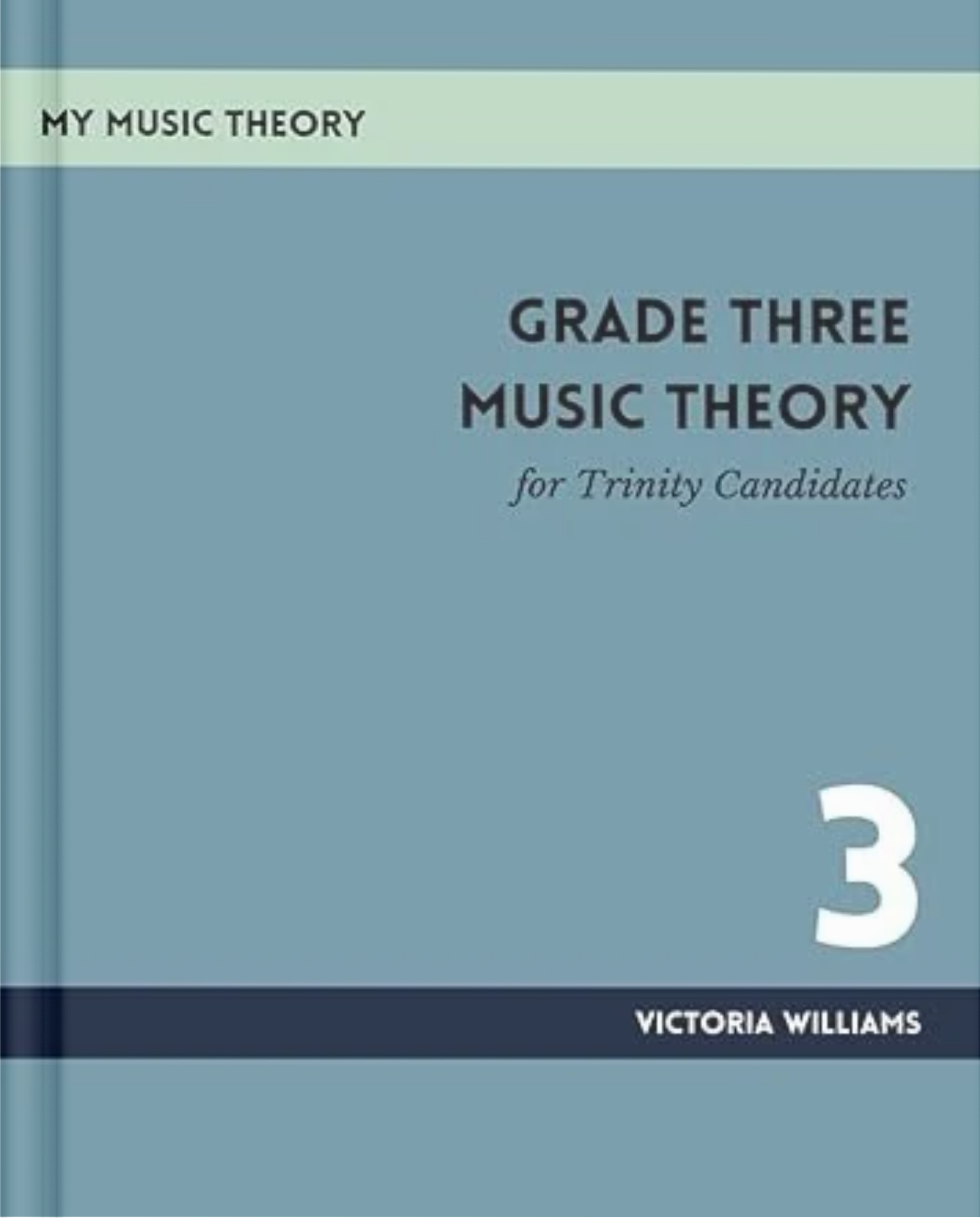Welcome to the Trinity Grade 3 Music Theory start page!
On this page you can find the syllabus information, and links to the free and paid Trinity Grade 3 Music Theory lessons available on this site.
You will find a large number of free lessons on this website, or get the full Trinity Grade 3 Music Theory course in your preferred format:
Trinity Grade 3 Free Music Theory Lessons
- Triplets
- Major Scales: D and B Flat
- Melodic Minor Scales
- Minor Scales: Gm and Bm
- Key Signatures and Key (Grade 3)
- Chords and Cadences (Trinity Grade 3)
- Chord Progressions
- Compound Time Signatures
- Rests (Grade 3)
- Spotting Errors
- Composition (Trinity Grade 3)
- Musical Terms Grade 3 (Trinity)
Trinity Grade 3 Syllabus
Rhythm
- Compound time (time signatures of 6/8, 9/8 and 12/8 )
- Grouping semiquavers and semiquaver rests in simple and compound time (16th notes and rests)
- Dotted quavers and dotted quaver rests in simple and compound time (dotted 8th notes)
- Rules for grouping note and rest values within 6/8, 9/8 and 12/8 time signatures
- Quaver triplets (8th note triplets)
- Anacrusis
- Ties using new note values
Pitch
- Naming and using notes in treble or bass clefs (to three ledger lines above or below the stave)
- Bb and D major keys (for all major keys for the grade: scales, key signatures, one-octave arpeggios, broken chords and tonic triads (root or first inversion)
- G and B minor keys (for all minor keys for the grade: scales — natural (Aeolian mode) and harmonic and melodic, key signatures, one-octave arpeggios, broken chords and tonic triads (root or first inversion)
- Second inversions of major and minor tonic triads of keys covered so far
- Identifying the key of a piece in Bb or D major and G or B minor
- 5th degree of the major/minor scale being known as the dominant or soh (major keys only)
- Dominant triads for all keys covered so far
- Major/minor dominant triad labelled:
— as a chord symbol above the music (e.g. G in the key of C major or Em (E where the 7th
degree is raised) in the key of A minor)
— as a Roman numeral below the music (e.g. V in the key of C major or v (V where the 7th degree
is raised) in the key of A minor) - 7th degree of the major/minor scale being known as the leading note
- Understanding the term ‘chord progression’
- Recognising a perfect cadence in the home key (major or minor)
- Intervals (major/minor 6th, major/minor 7th above any tonic for the grade)
- Writing tonic chords in root position in any key for the grade as well-balanced 4-part chords for SATB
- Real and tonal sequences
- Similar and contrary motion
- Transposing a tune up or down an octave from treble clef to bass clef and vice versa
- Ranges of violin, flute, cello, bassoon, as defined in the workbook
- Knowing that violin and cello are string instruments, flute and bassoon are woodwind instruments
- Musical terms and symbols
Download the complete Trinity Music Theory Syllabus here.


